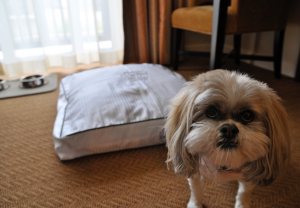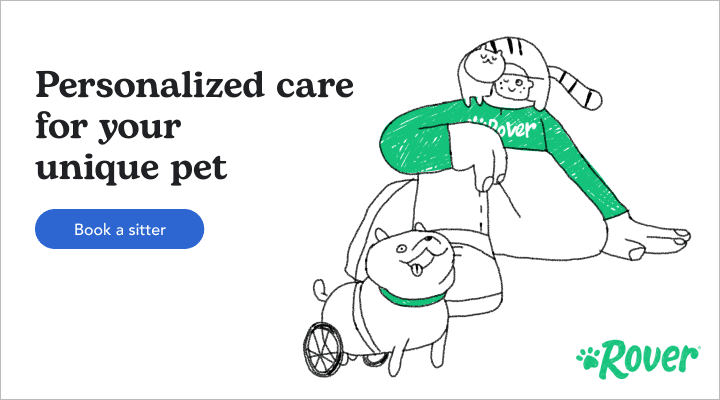If you live in a highly-competitive housing market—like San Francisco, New York, or D.C.—renting a house or an apartment with a pet isn’t easy. With more renters than desirable units available, landlords can be afford to be picky and say “no pets allowed.”
But there is hope for pet parents looking to compete for quality rentals. Pet behaviorist and founder of The Pooch Coach training, Beverly Ulbrich, has outlined the tips to give you a leg up over the competition and score the perfect pad for you and your pet.
Tough Rental Market
According to The Fiscal Times, these big cities are among the top-15 most expensive in the United States, listed with the average rent of a one-bedroom apartment:
- San Francisco—$3460
- New York—$3000
- Boston—$2300
- Washington D.C.—$2000
- Los Angeles—$1760
- Chicago—$1670
- Seattle—$1630
- San Diego—$1480
- Philadelphia—$1350
- Denver—$1300
Fortunately, some of these markets are among the most pet-friendly as well—like Denver and Seattle—but even then, most landlords prefer cats to dogs.
Sadly, moving-related issues are one of the most common reasons cited for pet surrender to shelters. To avoid that heartbreaking dilemma, let’s get to the tips to help you secure the perfect pet-friendly rental.
Well-Mannered Pooch
Not surprisingly, a well-trained pooch is your best bet to snagging a sweet rental. Your dog should be housebroken, friendly, clean, and have good manners. Bring your pet along to check out the new digs and meet the owner.

Let your dog speak for himself, showing how he can sit nicely to be pet and how friendly (and calm!) he is. Image via Flickr.
“Show how he can sit nicely to be petted, not jump around or bark, and he’s clean and well groomed,” Ulbrich says. “Let your dog speak for himself.”
Not only should you show up with your dog to demonstrate his good behavior, but get your dog certified. Take the AKC Canine Good Citizen test—this ten-part test is a good guarantee your pet is not a liability, and some landlords even require it.
“It shows he’s definitely friendly and safe, and should be welcome anywhere,” Ulbrich says. “Either way, it will help to have this certification to prove your commitment to having a safe pet.”
Ulbrich says the CGC test is great for dogs that are perceived to be dangerous, like pit bulls or rottweilers.
“Landlords want to be assured the dog isn’t aggressive,” Ulbrich adds. “When they see your dog has passed this test, they’ll say, ‘Wow, I guess he is well trained.'”
What does it take to pass the test? Again, there are ten sections your dog must master, including:
- Accepting a friendly stranger
- Sitting politely for petting
- Appearance and grooming
- Reaction to other dogs
- Reaction to distraction
- Supervised separation
If your dog can’t pass the test for a minor reason—say he doesn’t like his paws being touched—another option is getting an evaluation from a professional behaviorist.
“The landlord can call and the trainer can vouch that your dog is going to be safe and not aggressive,” Ulbrich adds.
Have a Resume
Creating and handing out resumes when meeting prospective landlords not only shows you are serious, but also makes you stand out.
“It gives a nice summary of why you’d be the ideal tenant,” Ulbrich adds. “And it’s a nice leave-behind so they remember you over all the other people who stopped by to see the rental property.”
So what should your resume include?
- Training classes and abilities of your pet. “Talk about how your dog is housetrained, been to obedience class—anything you can say about how friendly and well-mannered he is,” Ulbrich explains.
- Rental and payment history. “On-time and no missed payments are the biggest items to point out,” Ulbrich adds.
- Job and credit history. “If you have a good job, point it out!” Ulbrich says. “Emphasize if you’ve been with the same company for a long time and that you intend to stay in your current job.”
- References for you and your pet, such as previous landlords, a veterinarian, or a dog trainer. “Having people who can vouch for your dog as a well-behaved pet who isn’t going to do damage to the unit will help,” Ulbrich explains.
Negotiating the Lease
Most landlords fear damage to their rental unit and will charge a pet deposit. Factor this into your budget, and offer more if needed to negotiate the lease.
“Since you trust your pet and know he isn’t going to do damage, then you should be willing to offer more of a deposit to calm any of the landlord’s fears,” Ulbrich suggests.

If you have a well-behaved and clean dog, offer more of a deposit to ease a landlord’s mind. Image via Flickr.
Do a thorough walk-through upon move in, noting any pre-existing damage so the landlord doesn’t try to pin it on your pet when you move out. Also ask if the pet deposit is refundable if you leave the house in prime condition with only wear and tear damage.
Lay out the pet terms very clearly in the lease, so there are no surprises or arguments from both owner and renter. And although this may seem like a no-brainer, make sure “pets allowed” is written into the lease.
“Make sure the landlord does acknowledge he’s allowing your pet in the lease, because there could be a problem with the lease being transferred and the new landlord may not know about your pre-exisiting verbal agreement,” Ulbrich says.
The Bottom Line
If you have any doubts on the power of these tips, Ulbrich says they have worked for dozens of her clients in the Bay Area—the most competitive rental market in the country. She remembers one client in particular.
“The landlord actually came after her and wanted her as the renter because she sounded so amazing, even though she had two cats,” Ulbrich says. “These tips will help you stand out, look more committed and serious about getting a place, and be remembered over all the other applicants.”
Top image via Flickr CC/Patrick Maloney





